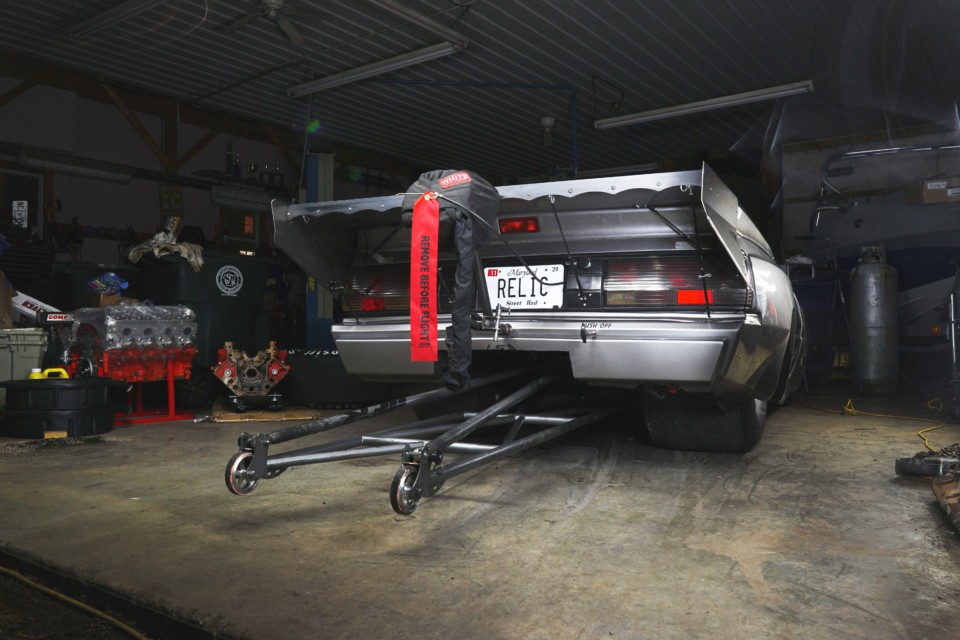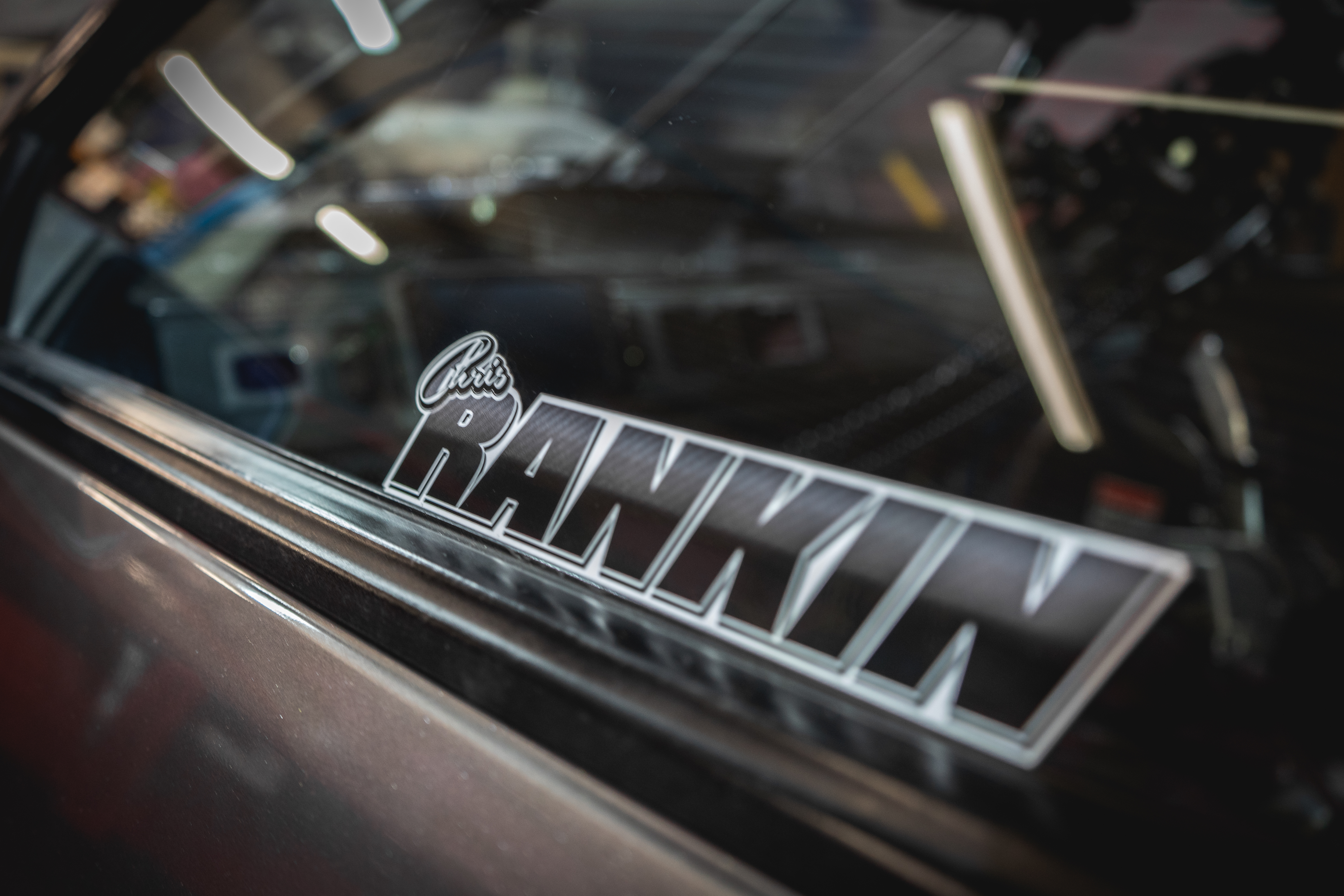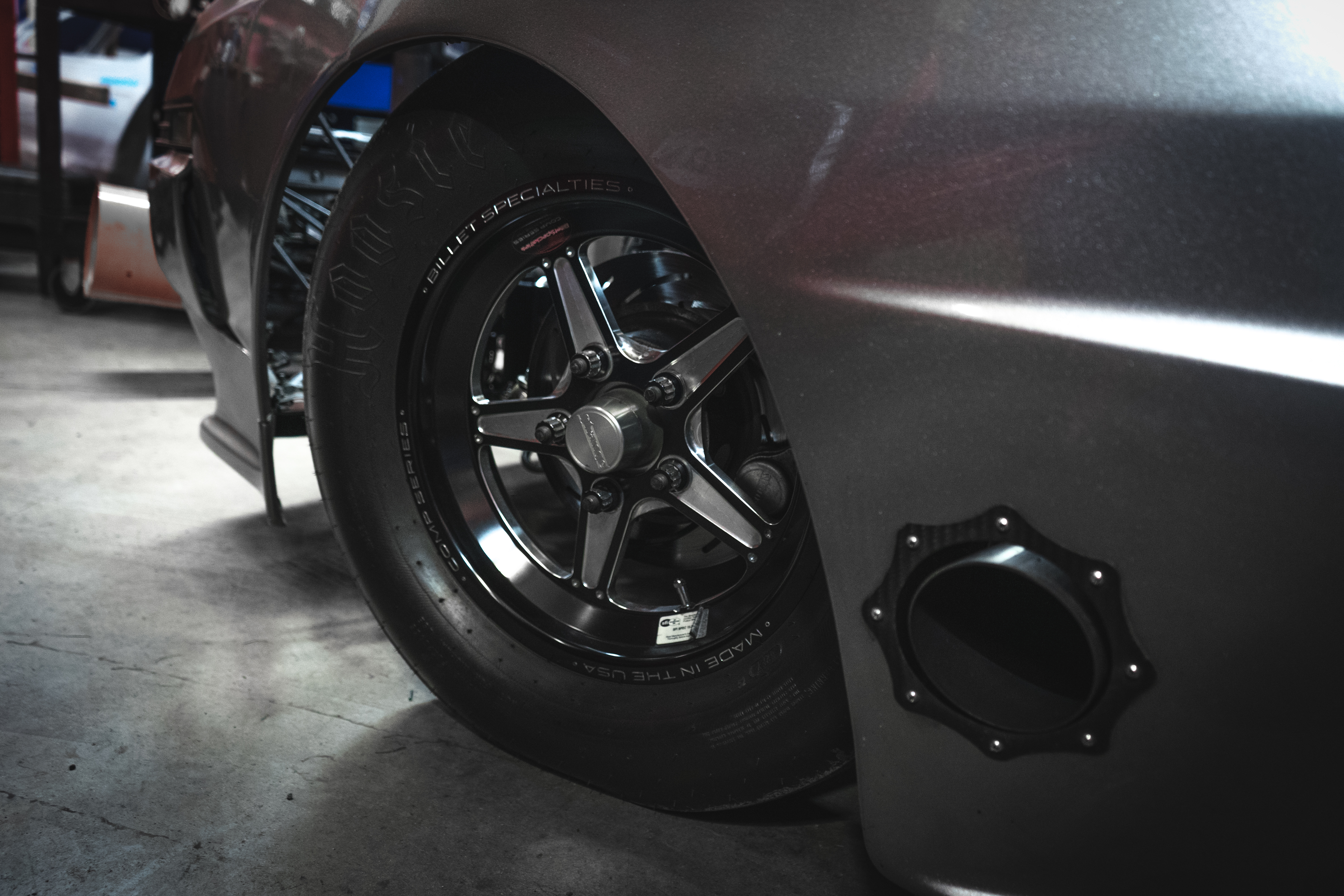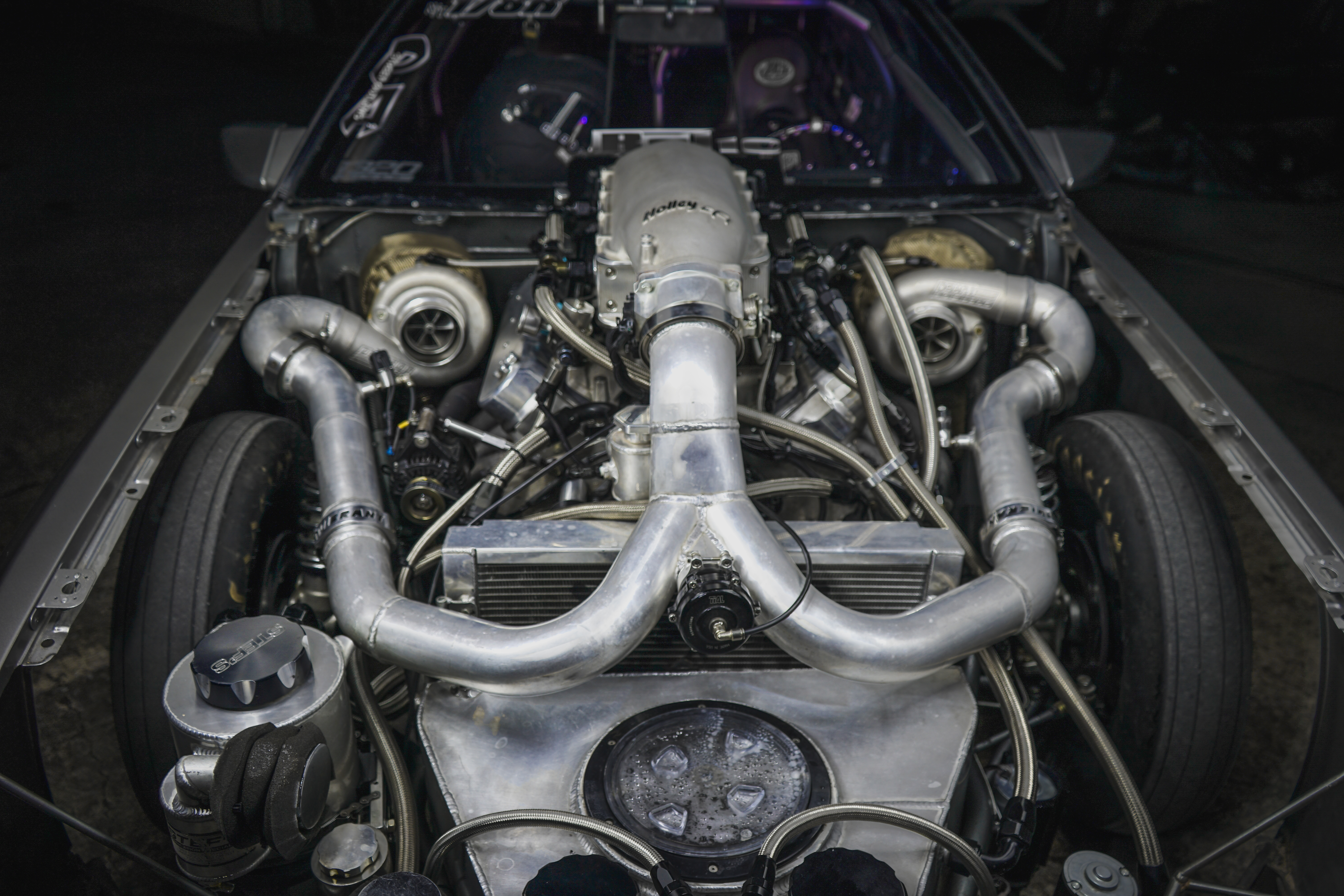Photos by: Lethal Shutter Productions LLC
When Chris Rankin shows up at a dragstrip with his silver race car, the first thing people ask is, “What kind of car is this?” Some folks guess a Mazda RX-7, others assume Toyota Supra, and some even think it’s a Porsche 944. Wrong, wrong, and wrong. His car is a Chrysler Conquest. Well, actually it’s a Mitsubishi Starion. In reality, those two are the same thing. Confusing? Hey, it was a crazy time in the 1980s: four-cylinder, turbocharged, rear-wheel drive Mitsubishis were being rebadged as Chryslers and carving up back canyon roads. Rankin’s Relic changes all of that because the turbo-four cylinder is now gone and this Mitsubishi/Chrysler is now powered by a potent LS powerplant.
Once the 2.6-liter Japanese turbo engine was gutted, it was replaced with an LS3, circa 2007. The engine block was bored to 427-cubic inches, with a Callies Billet Magnum crankshaft holding Oliver Racing Parts Billet I-Beam connecting rods attached to Diamond Racing Custom LME Pistons. The LS was built by LME/Mark Smalls Machine in Houston, Texas utilizing a Pump Cams solid camshaft and Mast Motorsports Black Label 11-degree, six-bolt LS3 heads. Air and fuel are fed through a Holley Mid Ram intake manifold after being spun through two Precision Turbos cranking out 43 pounds of boost through a 417 Motorsports intercooler. How much power does all of that LS insanity create? 2,350 horsepower at 1900 lb-ft of torque to be exact, pushing The Relic beyond 200 miles per hour and breaking the world record for fastest Chrysler Conquest. All of this power is controlled by a Holley Dominator ECU and monitored through a Holley 7-inch touch screen dash on the interior of The Relic.
THE RELIC
Chris Rankin is 39 years old and owns both C2 Crane and Tree Service and C2 Concrete. When he isn’t running his businesses in Maryland, he’s behind the wheel of many Chevrolet-powered machines, from his 725 horsepower Cadillac CTS-V to his 2015 Laguna Blue Z07. Even though he has a serious passion for GM vehicles and considers his family a “bowtie family,” he has always had a soft spot for the Chrysler Conquest.
“I was 15 years old and my friend Steve pulled up my street with his black 1989 Chrysler SHP Conquest,” said Chris. “It had all the bells and whistles. Growing up in the Cannonball Run era I loved the sound of that car, just like in the movies. Six months later I bought my first car, a 1987 Mitsubishi Starion with 187,000 miles on it. I started to tweak the car before it had tags on it or a drivers license.”
Chris was brought up around cars and his grandfather was a drag racer, spending lots of time at Capitol Raceway. Chris’s competitive nature led him also to start racing cars. He is a self-taught mechanic and picked up a lot of his skills while doing daily repairs on his first car, the ’87 Starion. According to Chris, he wanted to go faster which meant more in-depth technical maintenance was required.
“I had a job that paid $5.15 an hour, so money didn’t go far. I had to come up with creative ways to make air, more fuel, and cooler intake temps a reality with good old-fashioned ingenuity.” With really no aftermarket support for the Conquest/Starion. Chris and his close friends had to figure out on their own plan make more power. For air, they bypassed the mass air sensor with a ball valve from the hardware store. They also used an air compressor regulator to dial in more boost from the interior. For fuel, they would modify the factory fuel pressure regulator to make 15-20 PSI. Then it was off to the IDRC drag racing scene in the Northeast during the late 1990s.
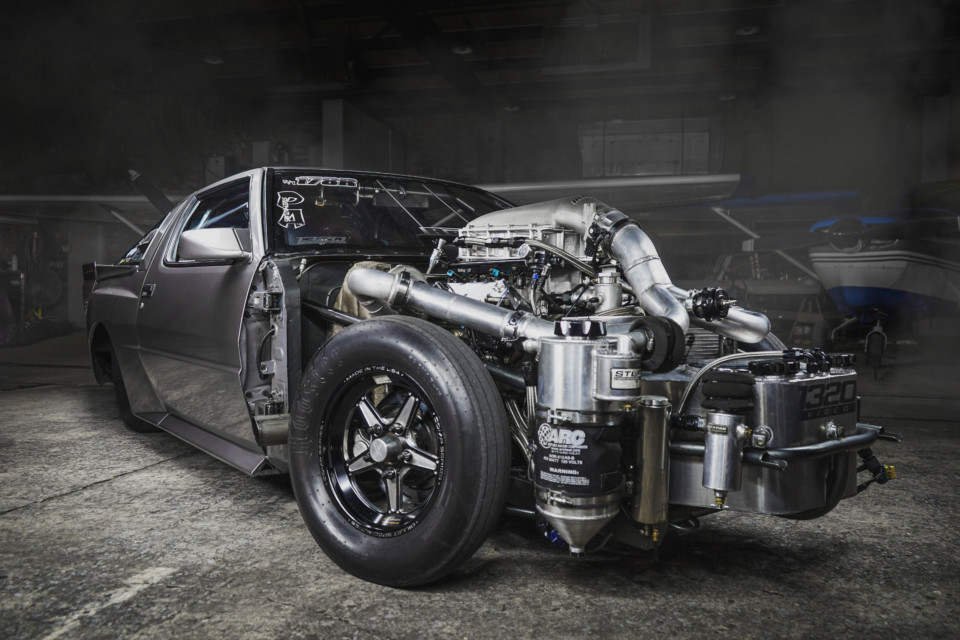
One of the cool details about The Relic is the stock steel doors and hinges with working electric windows.
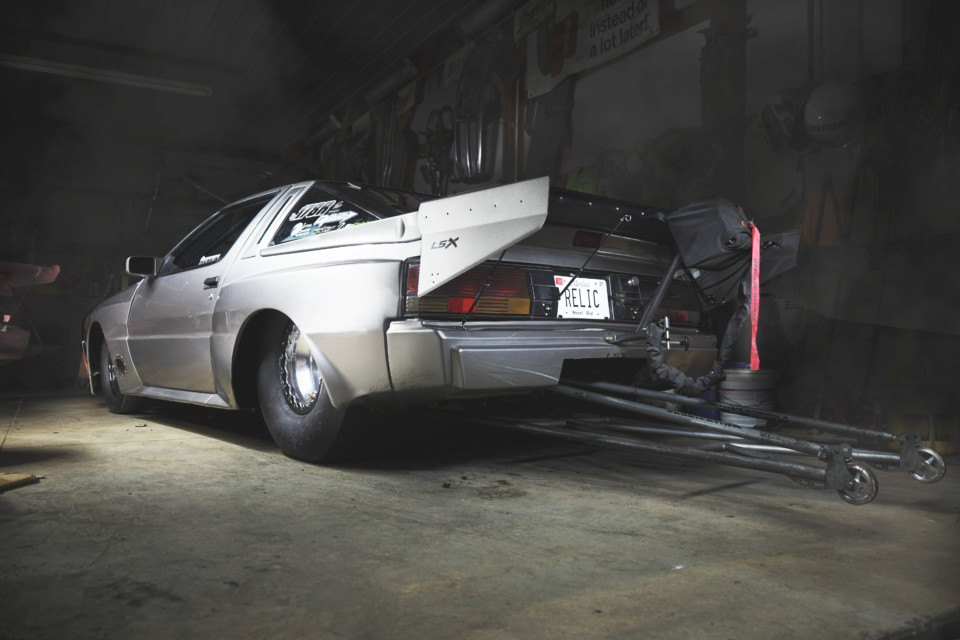
Most muscle car owners don’t recognize the Conquest/Starion and the car doesn’t have much lifeblood in the racing world or aftermarket support.
RACING
Before Chris went LS crazy on a Chrysler Conquest, he was successful with his Mitsubishi Starion with the original Japanese powerplant, running 10.0s in the ¼-mile at 137 miles per hour. “At one point back then I had the fastest Conquest/Starion.” he notes. Then one day while he was at the racetrack running his Starion a gentleman named Stan walked up to him and asked, “Would you like another one?” Chris thought he needed another car like he needed a hole in his head and knew his wife would not be so keen to the idea. But Stan gave Chris a little piece of information he couldn’t resist: this particular 1987 Chrysler Conquest was a complete tube chassis.
After talking to Stan, two days later Chris went down and took a look at the Conquest which he was told, “Just needs plumbing and wiring.” Chris wanted the car. He told his wife Amie that if he bought this car, he would be racing it against the finest No Prep street racers in the country. After some price negotiating, thirty days later on December 27, 2015, the Conquest was his.
THE BUILD
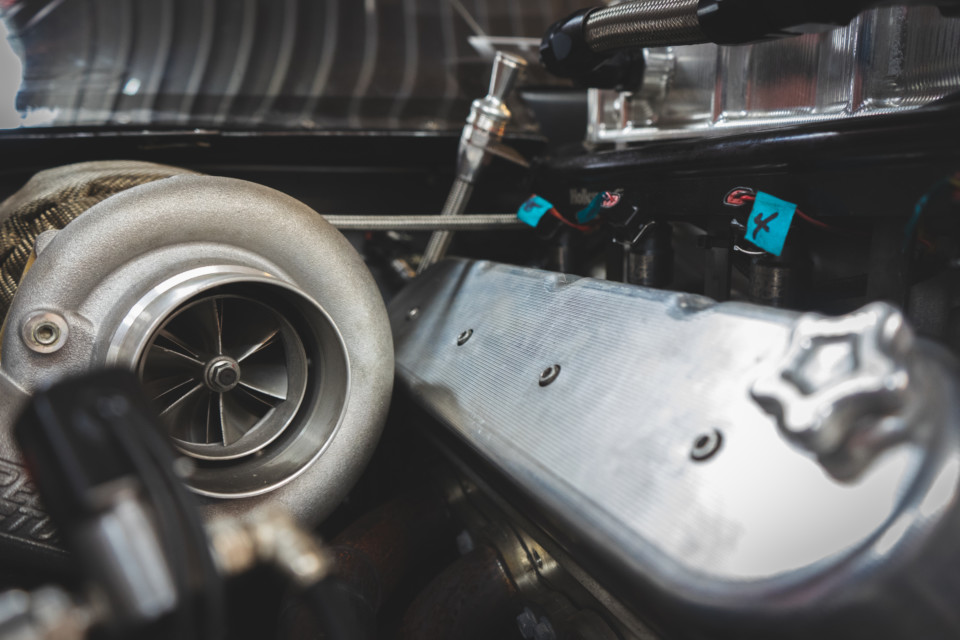
The tube chassis was originally set up for a big block Chrysler engine but at this point in Chris’s racing career, he had already made the move to LS based motors with stand-alone electronic fuel injection. He quickly plated the chassis to accept an LS power plant.
The tube chassis was initially set up for a big-block Chrysler engine, but at this point in Chris’s racing career, he had already made a move to LS-based motors with stand-alone electronic fuel injection. He quickly modified the chassis to accept an LS-powerplant. Chris put in 1,050 hours of his own time into the car. He had to upgrade the chassis from an 8.50 certified cage to 7.50. The car needed more than just plumbing and wiring — it needed bodywork, suspension, paint, and windows. Everything from the front bumper to the rear wheelie bars needed to be tightened up.
Except for the windshield and hood, all of the steel and glass on the car is from the factory. The car switches gears through a Turbo-Glide automatic with a 5,200 stall ProTorque EV1 converter. Power is divvied up to the rear Hoosier tires —sometimes Small Tire class, sometimes Big Tire class — through a narrowed and reinforced 9-inch rear end and Strange 40-spline gun drilled and profiled axles.
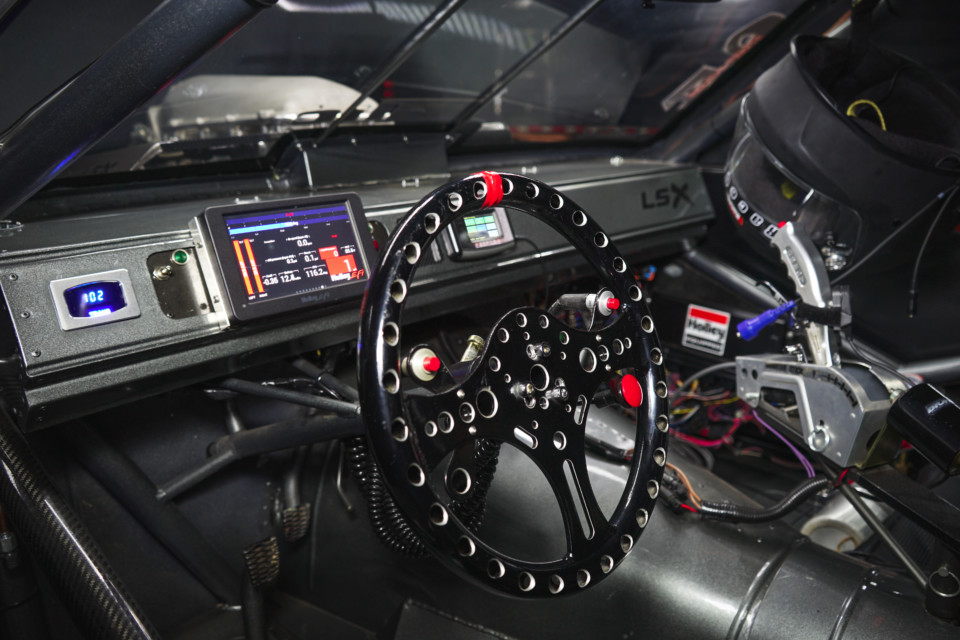
The interior of The Relic is all business with a Holley 7 inch touch screen, digital transmission temperature gauge and a Davis Profiler traction control monitor which measures spin from a Davis driveshaft speed sensor.
Because the Conquest is such an unrecognizable vehicle to people in the muscle car scene, only about one person in 75 correctly knows the make and model, and some think it is a Delorean. Since this make of car has been virtually forgotten by the masses, Chris named it The Relic. “I really love the lines of the car,” said Chris. “The body lines, the low profile design, and in full drag race form it is my favorite.” The Relic drives on ethanol pump gas and has proven to be very reliable and drivable. Chris and Amie can drive into town for lunch or local car shows, and it is enjoyable to cruise around.
WINNING
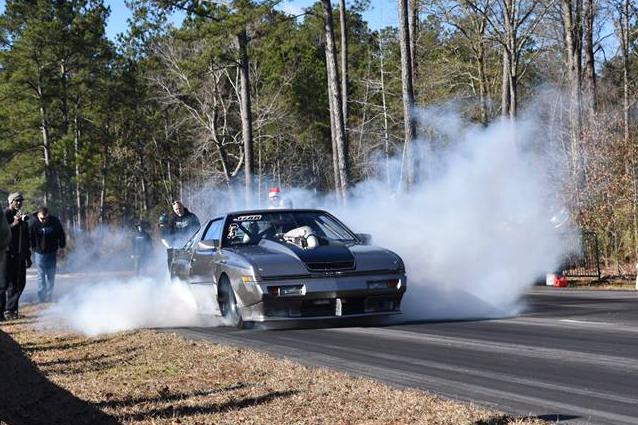
Chris Rankin killing tires at the 710 Dragway. Photo by Colton Danger Parrish.
Piloting The Relic, Chris and his Conquest have won some big events. They won a small tire race, the Land of the Hurricane No Prep at Colonial Beach during a season opener. They held the crown at King of Coastal in Ocean City, Maryland, for a short period. They won the NY Nutty Money 10K big tire No Prep race. The duo run No Prep racing across the nation in both Arm Drop and Instant Green formats.
Chris is keeping his elapsed times and mph close to his chest telling us, “This is not a time car. The Relic is currently the fastest Conquest in the world, and I wish to keep the ET and MPH undisclosed.” Chris and The Relic have been on the Discovery Channel three times racing against the well-known and respected “MSO” (Memphis Street Outlaws). “The Relic has received a lot of recognition at Berkeley Springs, West Virginia, Airport No Prep events, said Chris. “They filmed the season finale of Season 3 of Memphis Street Outlaws and The Relic put some MSO cars and a few others on a trailer and packing.”
Each time Chris and The Relic make a pass they get better and better. “We have finally gotten a handle on The Relic with our No Prep times and traction control,” said Chris. “We did well toward the end of the season racing with some well-respected racers. We will travel anywhere, anytime for a race.”





